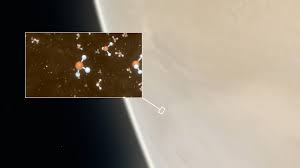
Something deadly might be wafting through the clouds shrouding Venus—a smelly, flammable gas called phosphine that annihilates life-forms reliant on oxygen for survival. Ironically, though, the scientists who today announced sightings of this noxious gas in the Venusian atmosphere say it could be tantalizing—if controversial—evidence of life on the planet next door.
As far as we know, on rocky planets such as Venus and Earth, phosphine can only be made by life—whether human or microbe. Used as a chemical weapon during World War I, phosphine is still manufactured as an agricultural fumigant, is used in the semiconductor industry, and is a nasty byproduct of meth labs. But phosphine is also made naturally by some species of anaerobic bacteria—organisms that live in the oxygen-starved environments of landfills, marshlands, and even animal guts.
Put simply, phosphine shouldn’t be in the Venusian atmosphere. It’s extremely hard to make, and the chemistry in the clouds should destroy the molecule before it can accumulate to the observed amounts. But it’s too early to conclude that life exists beyond Earth’s shores. Scientists caution that the detection itself needs to be verified, as the phosphine fingerprint described in the study could be a false signal introduced by the telescopes or by data processing.
Picture Credit : Google




